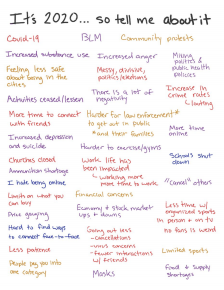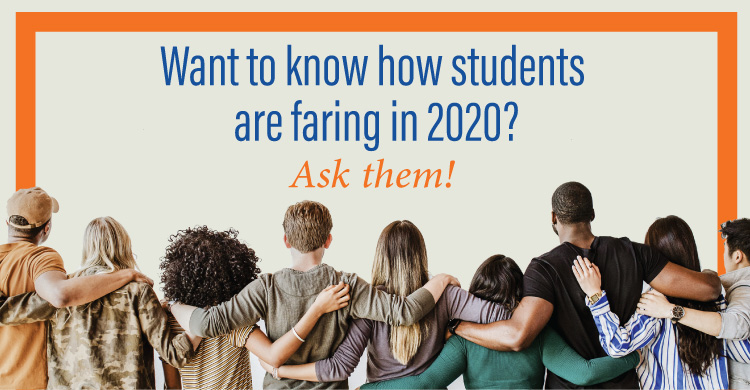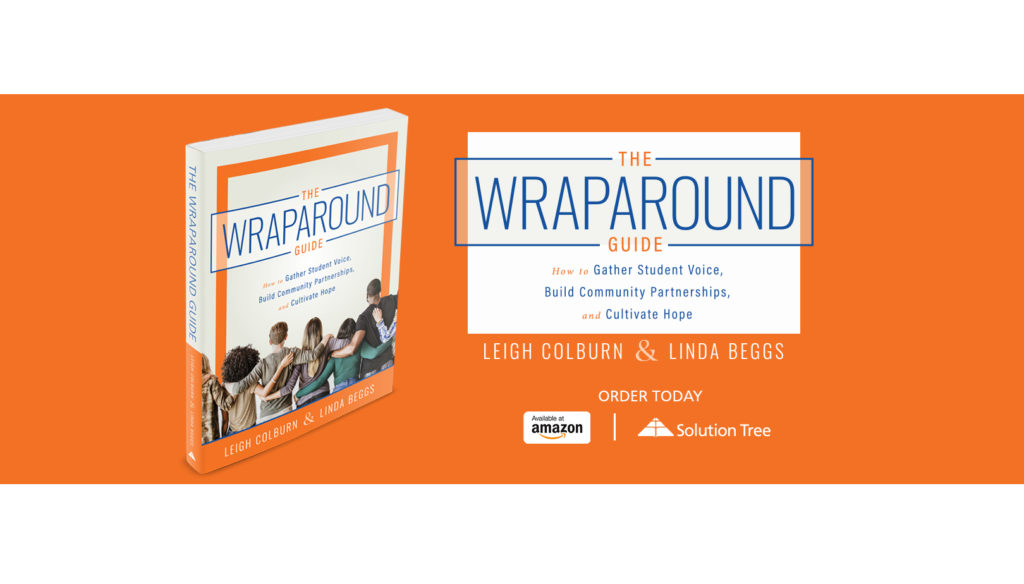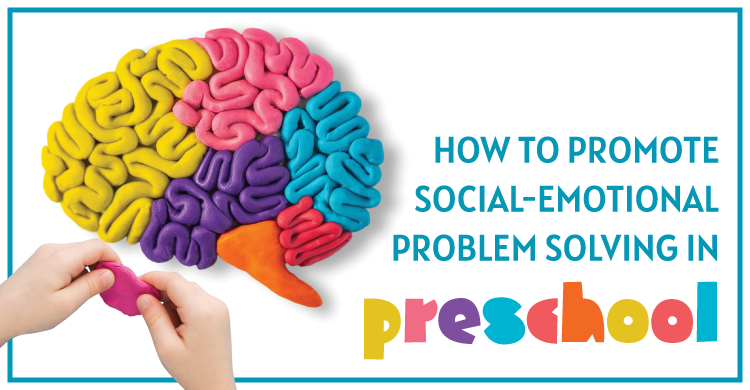Based on The Wraparound Guide
Like virtually everyone, students are facing unprecedented changes and challenges in 2020: distance learning, canceled or altered social interactions, closed schools, altered athletics schedules, disruption of extracurricular activities, changed family dynamics, and perhaps sick—or even lost—loved ones.
Schools also face rocky terrain as they attempt to resume this fall—whether in person, online, or through a combination of both media. Typical school policies and school improvement plans simply won’t provide the guidance educators need to weather this storm, especially when they also are personally impacted by current events.
Former secretary of education John King Jr. said he fears that, “even in places that do distance learning well, we can expect that students will lose significant ground.” He also said he worries “about the kids for whom school is the place that provides structure and support and a sense of security that don’t have that” (“Long-term effects of months-long school closures on U.S. children,” 2020).
We work with schools interested in listening to their students to learn about the barriers they face, for the purpose of providing customized wraparound services. On a Thursday in mid-September, we met with groups of high school students in a rural community in northern Georgia. As all schools in Georgia did, the high school closed down face-to-face instruction on March 16, 2020, and relied on virtual instruction for the remainder of the year. This particular high school reopened at the beginning of August, with about 75 percent attending in person and the remaining 25 percent opting for online instruction. Fortunately, the community has not seen a spike in positive COVID-19 cases since classes resumed.
The principal at this particular high school wanted to learn students’ perspectives on the events of 2020 so the school could better respond to their needs. The 90-minute “conversation circles” consisted of guided discussions about the impact 2020 is having on their lives and how their school could best respond. You can see from the following chart, these students were very tuned in to the issues swirling in their community, region, and nation.

We also invited each student to complete a personal reflection to tell us their individual thoughts and experiences. We’ve included a reproducible personal reflection template for you to use with your school, if you’d like. Almost three-quarters of the students reported that 2020 was either more stressful (61%) than in previous years or the most stressful (16%) year they could remember. In addition, the students (who largely opted for in-person learning) overwhelmingly reported “hating” distance learning, with one student adding, “I regret ever wanting school to close.”
The truth is, no one is an expert in how to manage the current reality. Your best bet is to expect hiccups, give allowances, and be flexible. When it comes to how schools can respond, students offered many insights into what might help them gain their equilibrium. Three major themes emerged:
Set realistic expectations
Even under “normal” circumstances, students arrive at school with varying degrees of barriers to learning, such as poverty, immigration, addiction, or mental/physical health. Before COVID-19 hit, schools and educational thought leaders looked for ways to promote equity. As Peggy Noonan observed in her April 23, 2020, Wall Street Journal column:
“‘We are not all in the same boat. We are all in the same storm.’ That succinct summation came from the writer Damian Barr this week, on Twitter. He’s right. Some are in yachts, he said, and ‘some have just the one oar.’” (Noonan, 2020)
Students confirmed the inequity, with comments ranging from “I feel like my family has gotten closer,” to “I have one friend whose school was her escape, and she spent a lot of time in the woods when school was out.”
Many students shared their aspirations of strong grades, yet reported struggling to maintain motivation amid constant uncertainty about school, as well as the present and the future. Feeling the pressure of looming high-stakes testing in the face of months of lost instructional time, some teachers might respond by ramping up the pace of instruction and assessment—leaving students feeling anxious and stressed.
As one student expressed:
“I just really hope our school and the state can dial back some of the pressure with our requirements or standards and testing. We are dealing with a lot and instruction has not been as strong for about six months of school. It is just the truth. I would rather we were given some time to just deal with all we are dealing with and fix the issues of 2020, instead of just piling on at-home schoolwork over all the information we missed.”
The teens didn’t want their teachers to stop teaching, but rather to approach them first as people, then as students. We hear this consistently when meeting with students—no matter the circumstances. Students want educators to take each student’s situation into consideration and “help us realize we all have problems and obstacles, and we probably always will, but somewhere along the way the load will lighten and things will get better.”
Help students process current events
Many students we talked with looked to teachers to help them learn how to navigate the complex issues of 2020 by altering their classroom practices, such as:
- Assigning a paper to students to write “about what they’ve done or what they have been through in these last few months and how they feel about it and what they’ve done to get through it.”
- “Taking some time out of their classes to give us small lessons on motivation and mental health or wellness.”
- “Planning in physical activity or getting outside” anytime they can.
Depending on the school, interventions can go beyond the classroom to reach the entire student body. For example, one student suggested a support group for those dealing with stress and anxiety as a schoolwide response to negative effects of 2020.
Create opportunities to connect
Not surprisingly, students keenly felt the absence of their friends during the prolonged school shutdown and expressed the desire to reconnect or form new relationships. One student lamented, “when a lot of us have been quarantined for four months, I feel like we have lost the ability to socialize for long periods of time. I wish our teachers would give us about five minutes in every class to just reconnect and communicate with each other about topics of interest or whatever we want.”
Students suggested their teachers and school leaders should design activities to promote more interaction between students and between students and teachers. One even suggested that doing so might reduce poor choices. “Social interaction is part of what helps us stay out of trouble. With all the fun and interaction removed right now, I think more kids are going to be getting in trouble.”
Teachers are in a unique position to connect positively with students. “I think a lot of positivity and encouragement would go a long way,” one said. “Keep reminding us this isn’t forever, and that it will get better and remind us that the best way to handle all that is going on is just to do our part.”
One student’s comment would be good advice, and I would love to see our national leaders follow her spirit. “I would tell them to let us get back to working together in groups. I want them to know that even though there are difficult times right now, allowing us to support each other—even on school work—is something that is encouraging to us. Working together is the only way we are going to overcome all of this.”
In conclusion, you’ll find no better time than now to start significant conversations with your students about how to make school better for everyone.
As one compassionate student told us, “I think teachers need some encouragement. I want them to believe everything will be okay in the end, but to realize that even if things never go back to the way they were before, it is still going to be okay. We’ll adapt. It’s not the end.”
References:
Noonan, P. (2020, April 23). Opinion. WSJ. https://www.wsj.com/articles/what-comes-after-the coronavirus-storm-11587684752
The long-term effects of months-long school closures on U.S. children. (2020, April 24). NPR.org. https://www.npr.org/2020/04/24/844562989/the-long-term-effects-of-months long-school-closures-on-u-s-children
[author_bio id=”3302″]
[author_bio id=”3292″]







